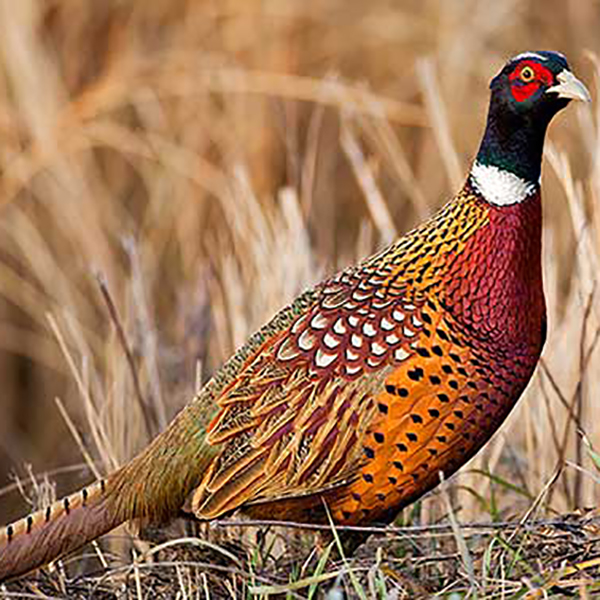X
Ring-necked Pheasant
Pheasant are large, colorful, long-tailed birds with short, rounded, and curved wings. Males are generally larger than females and are much more colorful. The tails are long and pointed, and the Female's are shorter than the Male's. The Male has a brilliant green head and white neck ring; the bodies of both sexes are a soft brown pattern with an iridescent russet. The call is a loud crowing followed by a resonant beating of the wings. When the pheasant is alarmed, it flies off with a loud cackle. There are nearly 50 species and even more subspecies of pheasant. Pheasants originated in Asia and in North America and have been widely introduced to many areas for sport hunting. All but one species of pheasant are still found in Asia. Most pheasants have long, strong legs with four-toed and clawed feet. The legs and bill are adapted to scratching in the ground for food. When a pheasant senses danger, it prefers to use its legs to flee, because although they are able to fly swiftly, they cannot sustain flight for very long. Male Pheasants often have spurs which are used in battles for dominance.
range
Key Facts
Region:
Asia
Gestation Period:
Incubation: 23-28 days
Number of Young:
8-15 eggs
Maximum Age:
Wild: 3 years, Captivity: 11-18
Antlers/Horns:
N/A
Native to: China & East Asia
Book A Hunt

